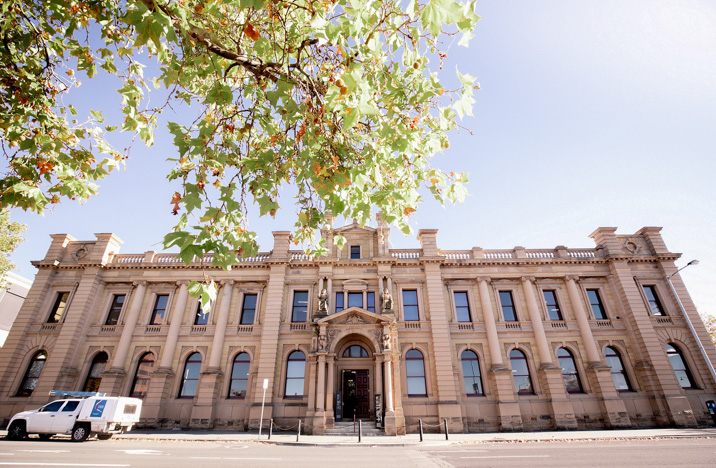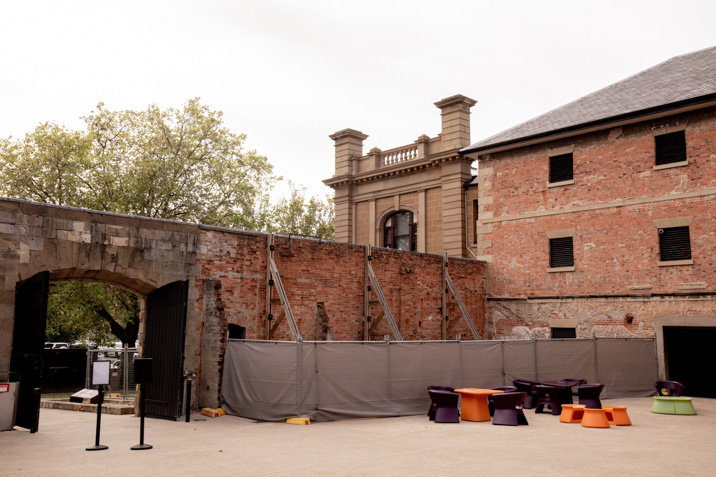The Tasmanian Museum and Art Gallery, affectionately known as TMAG, has been an institution embedded deeply within the island state’s culture since the 19th century. Home to the State Collections of Tasmania, TMAG houses approximately 800,000 objects, from fossils to fine art.
TMAG recently underwent conservation works in order to preserve the museum and ensure it remains a celebrated institution in the future. The timber and brick building was nurtured by heritage experts Purcell, who have overseen the restoration work of many cultural landmarks, including the UNESCO World Heritage Site Canterbury Cathedral and the award winning BICE Building in Adelaide.
Purcell was called upon by TMAG in 2018 to provide advice in regards to the maintenance and conservation of masonry that was the subject of rising damp and salt attack. It quickly became apparent there were larger issues at hand.
“Our consultation with TMAG coincided around a time of an extreme weather event where we had some pretty severe winds and the Watergate wall, which sits on the boundary of the building complex was moving,” says Purcell Associate Partner, Lucy Burke-Smith.
“A structural assessment identified that it had about a three month residual design life span and was at risk of collapse under winds in excess of 80 kilometres an hour.”
The critical nature of the project allowed the museum to acquire government funding for a wider package of works, which included the rising damp and salt attack issues, structural remediation of the watergate wall, replacement of the slate roof, and conservation of the masonry. Residual cement was removed in order to make way for roughcast concrete, a traditional lime render which is seldom used in contemporary construction.

“Tasmanians have always known the building as a brick building. We've changed their relationship and understanding about the building's history in reintroducing roughcast, which completely changes the presentation of the building,” Burke-Smith says.
“There’s been a couple of columns introduced to support the wall, which is another key element introduced to visitors.”
Hansen Yuncken Project Manager Alexander Swift says the building’s significance to community members was a recurring idea riffed on heavily by the construction company.
“It's one of those jobs that I don't wanna understate. It's just this beautiful old timber building. when you walk in the front door, you can smell the history, you can see the age in the floorboards,” he says.
“I was involved in the Port Arthur restoration project and in terms of significance to Tasmania, these are really important buildings and they represent an important part of European culture and give us the ability to be transformed back in time.”
Burke-Smith says the beauty of the project was its simplicity.
“The project has been pretty simple in the sense that there aren't many disciplines involved. It’s really a slight roof render, the installation of a couple of elements, but the complexities come from procurement and scale and ensuring access to the building is maintained.

“It's about 12 months worth of mortar preparation before you can execute the project. It’s so crucial, you have to get it right.”
When it came to construction, erecting the scaffold posed challenges due to not being able to tie it to the building. A freestanding scaffold joined together with innovative bridging elements made for ease of access without compromising the building’s integrity. A clockwork pattern followed, in which the roofer and renderer worked in tandem, significantly reducing the construction time.
The project holds an inherent sustainability to it, with the preservation of the building’s embodied carbon maintained through the conservation project undertaken by Purcell and Hansen Yuncken.
“Fundamental to sustainable principles is using traditional materials for conservation work. Using lime as opposed to cement and putting in slate, both have considerable life cycles.
“In that regard, conservation is sustainability practice.
For more information regarding TMAG, visit www.tmag.tas.gov.au.

